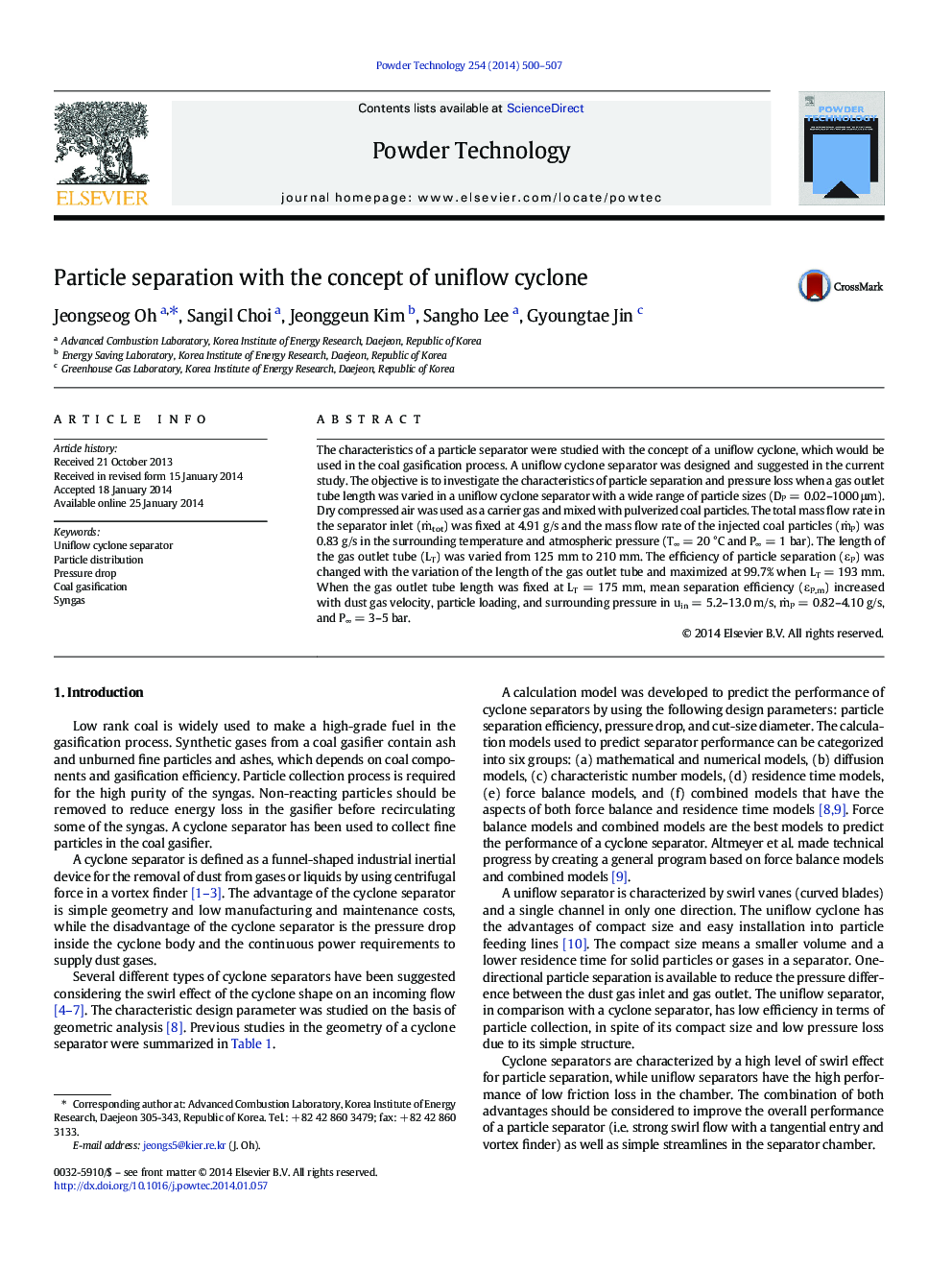| Article ID | Journal | Published Year | Pages | File Type |
|---|---|---|---|---|
| 236279 | Powder Technology | 2014 | 8 Pages |
•The characteristics of a uniflow cyclone separator were experimentally studied.•The length of the gas outlet tube was varied from 125 mm to 210 mm.•The separation efficiency was changed with the variation of outlet tube length (LT).•It was maximized at 99.7% when LT = 193 mm.
The characteristics of a particle separator were studied with the concept of a uniflow cyclone, which would be used in the coal gasification process. A uniflow cyclone separator was designed and suggested in the current study. The objective is to investigate the characteristics of particle separation and pressure loss when a gas outlet tube length was varied in a uniflow cyclone separator with a wide range of particle sizes (DP = 0.02–1000 μm). Dry compressed air was used as a carrier gas and mixed with pulverized coal particles. The total mass flow rate in the separator inlet (ṁtot) was fixed at 4.91 g/s and the mass flow rate of the injected coal particles (ṁP) was 0.83 g/s in the surrounding temperature and atmospheric pressure (T∞ = 20 °C and P∞ = 1 bar). The length of the gas outlet tube (LT) was varied from 125 mm to 210 mm. The efficiency of particle separation (εP) was changed with the variation of the length of the gas outlet tube and maximized at 99.7% when LT = 193 mm. When the gas outlet tube length was fixed at LT = 175 mm, mean separation efficiency (εP,m) increased with dust gas velocity, particle loading, and surrounding pressure in uin = 5.2–13.0 m/s, ṁP = 0.82–4.10 g/s, and P∞ = 3–5 bar.
Graphical abstractFrom the results of the experimental analysis, the efficiency of particle separation (εP) was changed with the variation of the length of the gas outlet tube (LT) and maximized at 99.7% when LT = 193 mm.Fig. 1 Efficiency of particle separation with increasing the gas outlet tube length (LT) in Cases 1–4.Figure optionsDownload full-size imageDownload as PowerPoint slide
